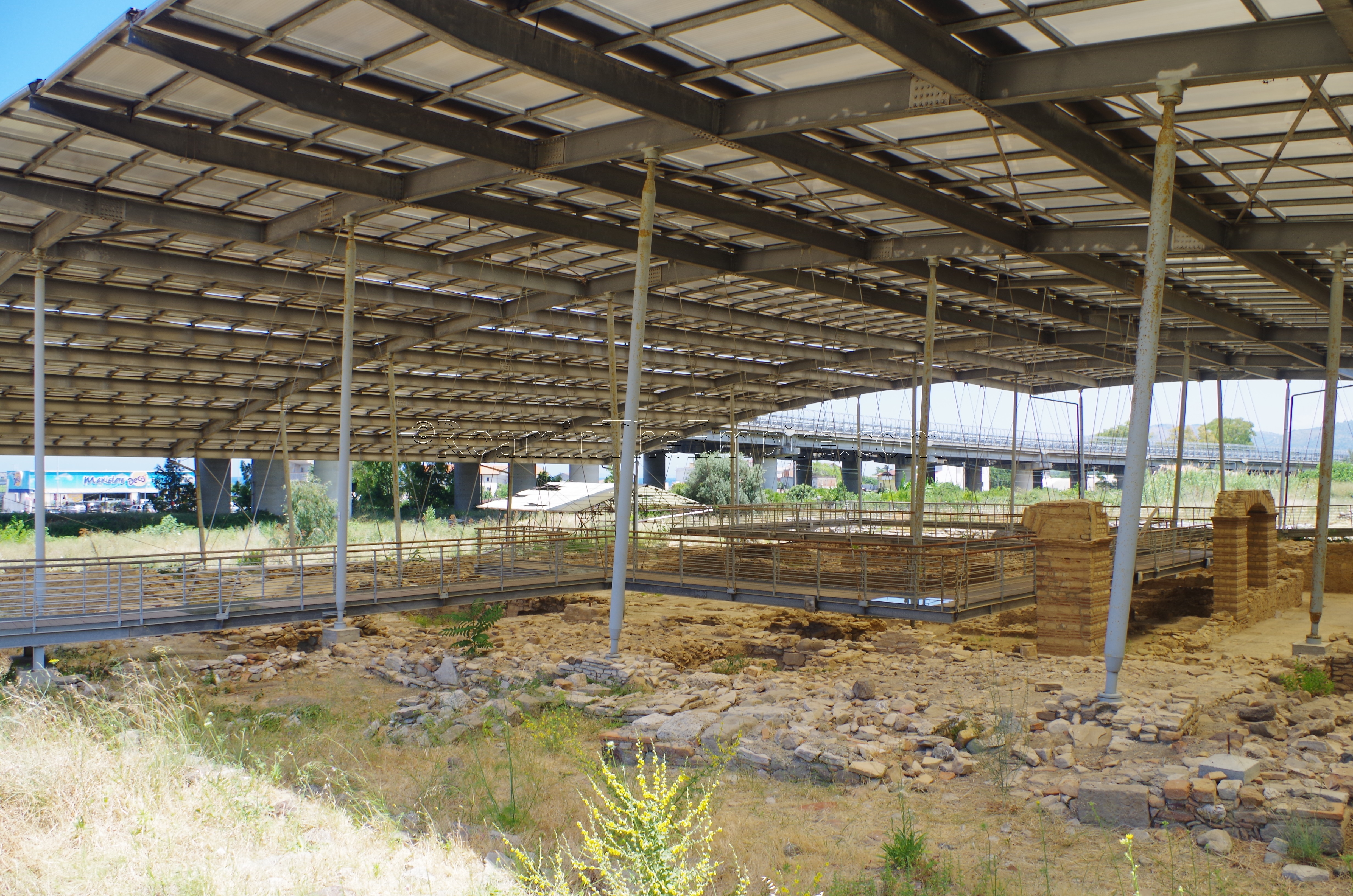
Most Recent Visit: June 2017.
I had originally wanted to include the Villa Romana di Patti as part of my post on Tyndaris, as the proximity and travel route of the two complement each other well (Patti works as a good base for seeing Tyndaris, and so visiting works well before or after). My post on Tyndaris ran a little long, though, and I didn’t want this villa to just be a side note, but rather thought it deserved its own specific mention. Discovered in August of 1973 during the works for the nearby A20/E90 highway, that now essentially runs overhead part of the site, the remains of the villa that are currently uncovered seem primarily to date to sometime in the 4th century CE.
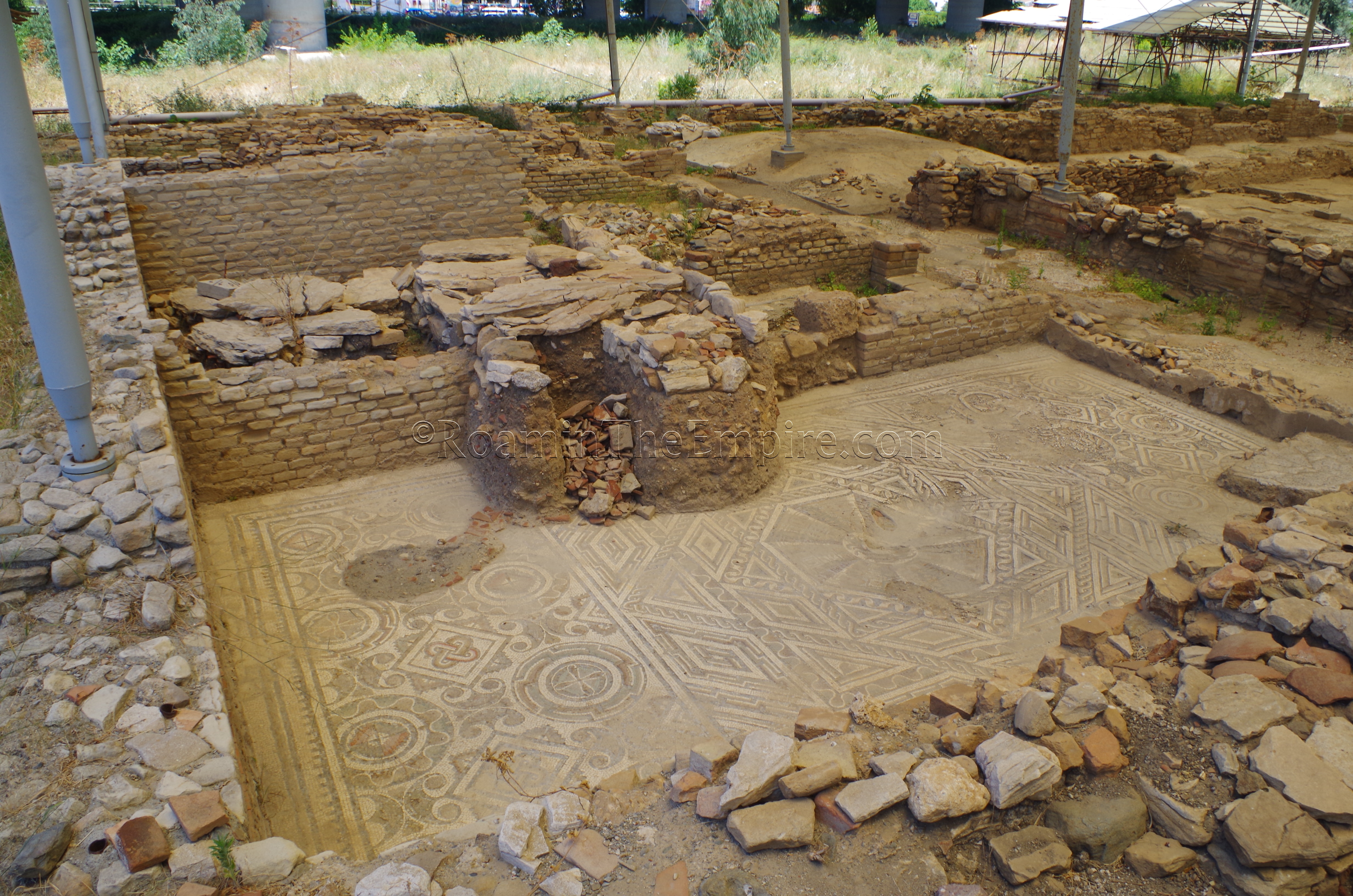
Originally the site was occupied by some unspecified structures in the 2nd to 1st century BCE, some scant remains of which have been uncovered. There also seems to have been an earlier villa on the site that dates to perhaps the 2nd or 3rd century CE. It has been theorized that the original villa was damaged due to seismic activity, necessitating the construction of the later villa, but, it could have just been a deliberate choice, as the later villa is larger and a bit of an upgrade over the previous villa. The life of the villa wasn’t very long, though, as it was largely abandoned by the time of the 365 CE earthquake centered near Crete that caused significant damage in the area. Even after the abandonment of the villa and the earthquake, there was some activity and perhaps even habitation on the site until the 6th century CE, as evidenced by some inhumation burials dating to about that time.
Like the Villa Romana del Casale, the Villa Romana di Patti seems to have been the center of a large latifundium agricultural estate. Also like the Villa Romana del Casale, the mosaics here are interpreted to be of North African style, which was quite popular at the time of the construction of both villas, and perhaps the work of North African workshops.
Getting There: Getting to the villa at Patti is actually relatively easy. On its own, Patti is on the main rail line between Palermo and Messina. From Palermo it’s about 2 hours, with some trains taking up to 3 hours, and costs 9.90 Euro each way. It’s a bit shorter and cheaper from Messina at about 45 minutes and 5.60 Euro for most departures. From Palermo there are about 10 departures a day, while from Messina the departures are quite frequent with at least one departure an hour for most of the day, sometimes more than once an hour. Check the specific schedules at TrenItalia. The stop for the Villa Romana di Patti is at Patti – S. Piero Patti. There are also buses from Tindari into the main square of Patti, and then regular bus service from the main square to the train station. This is the route I took in seeing the villa; traveling by bus from Tindari to Patti to see the villa after I had seen the archaeological park at Tindari. A reasonably correct bus schedule with fares can be found here. From the train station, the villa is a quick and easy 10 minute walk; take a right out of the station, take the first right you can make over the train tracks, and then take the first right again and you’re at the entrance to the villa.
The Villa Romana di Patti is located at Via Giovanni XXIII 2, 98066 Patti ME. It is open every day between 9:00 and 19:00 and admission is 2 Euros for the villa and the small antiquarium on site.
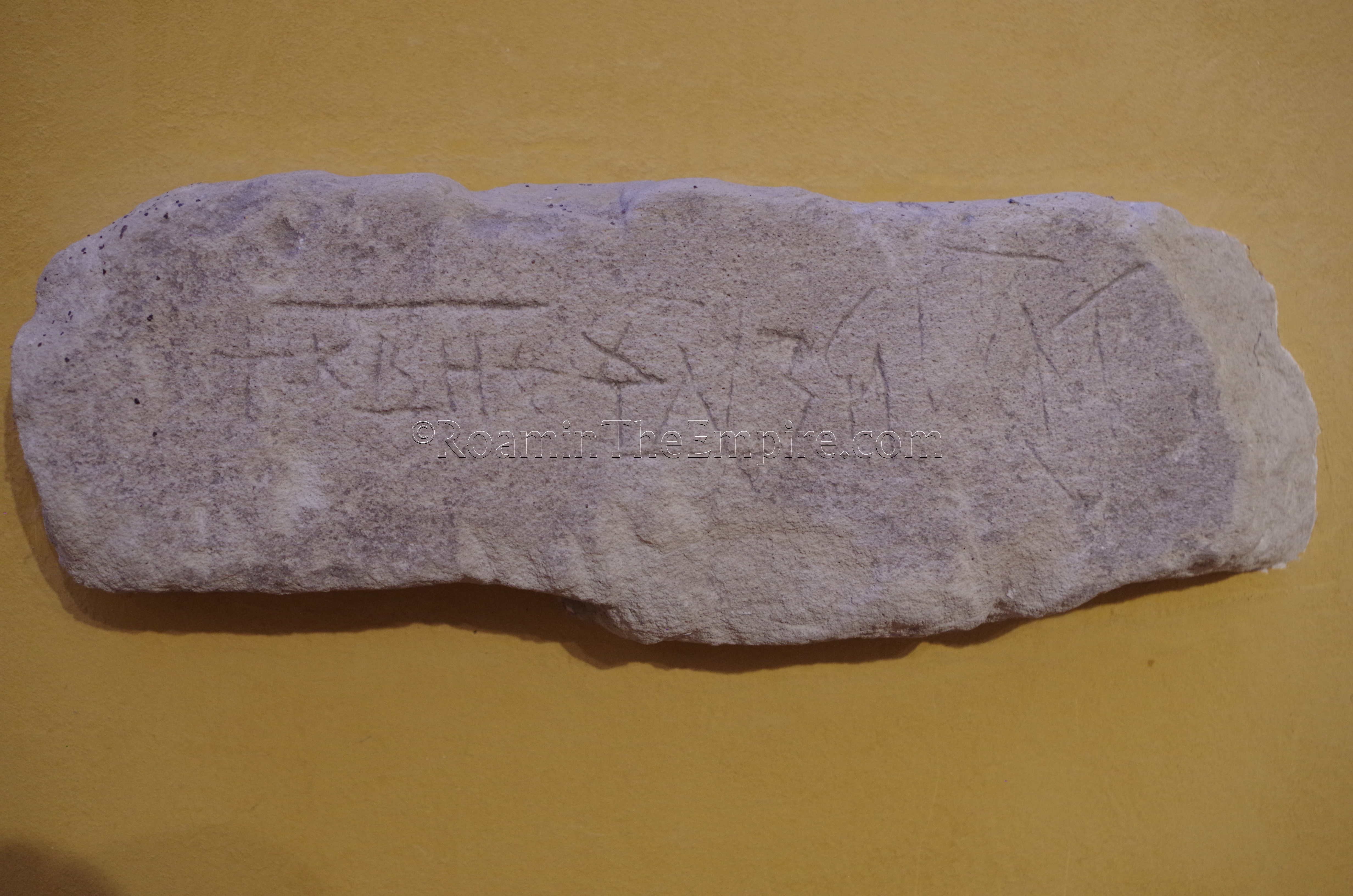
It is recommended by the staff to visit the antiquarium first, and in my experience that is pretty good advice. There are no major finds in the small museum, but, there are a number of smaller architectural pieces and small finds such as fragments of inscriptions, ceramics, and even a few carved bone objects. There are also a number of interpretive signs discussing the villa as well as its context within the region. The drawback, as one might expect, for someone that does not speak (or read) Italian, is that all the information is in Italian with no translations of the main text into other languages. This wasn’t altogether unexpected, though, as the site is a bit off the standard foreign tourist itinerary. There are lots of pictures, though, and those actually have English translations attached to them, so that can at least be helpful in putting some of the remains in context if one does not speak a great deal of Italian.
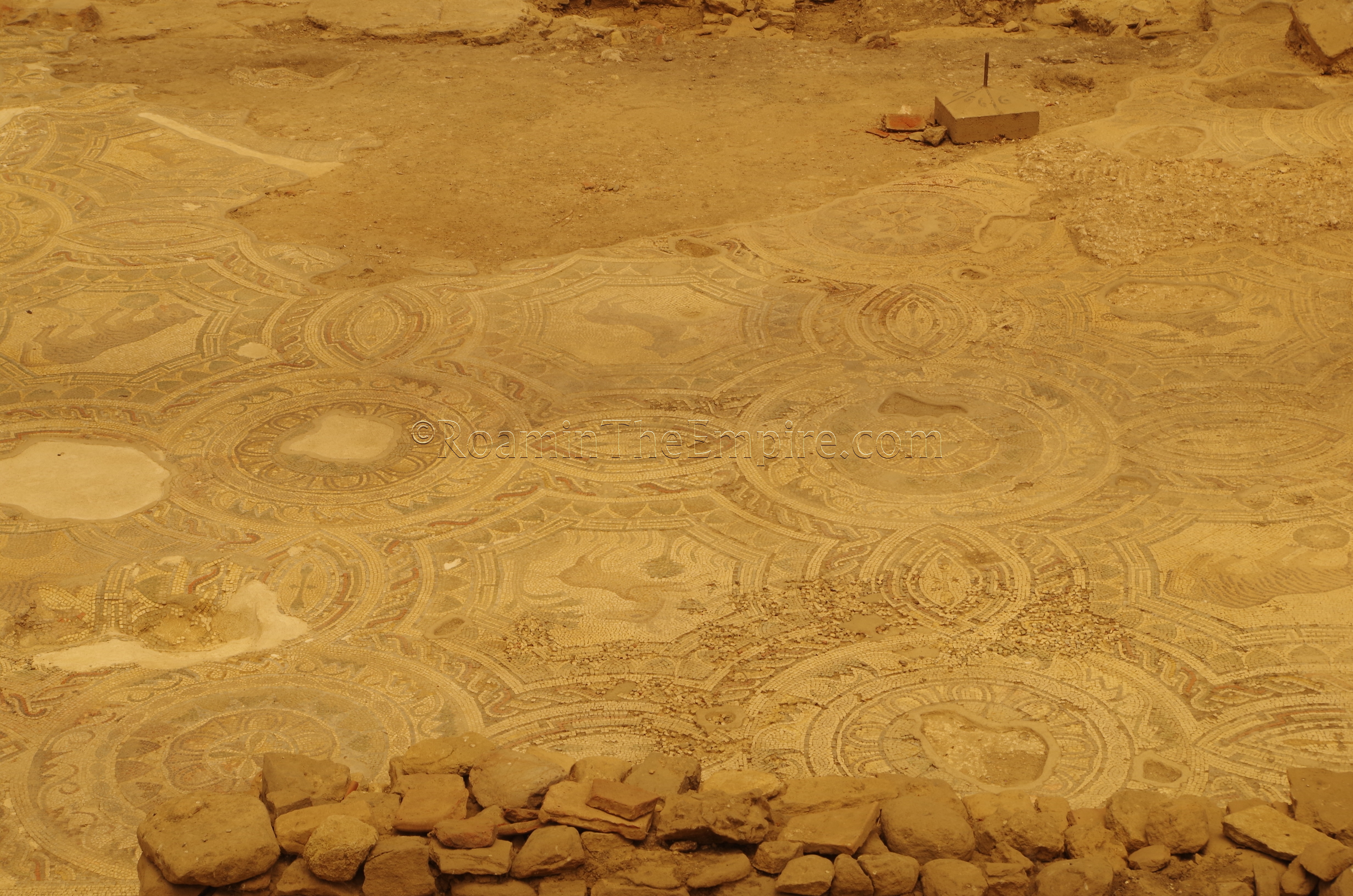
A large roof covers the majority of the site in order to protect the in-situ mosaics remaining, though some portions of the excavation are outside of the covering. While there are a lot of comparisons to be made between the Villa Romana di Patti and the Villa Romana del Casale, namely in terms of the construction dates, function, and relative expanse, there is a noticeable difference in the mosaics. Though both villas seem to have employed North African workshops for the production of their mosaics, the remaining mosaics here are more frequently of the geometric variety and less of the figural variety that are so plentiful at Casale. The Villa Romana del Casale is a bit bigger, though not excessively so, but the true measurement of the wealth and status of that villa’s occupants compared to those here might be reflected in the quality of the mosaics, as the figural mosaics would have been more complex compositions and as such, more expensive to produce. Some debate also remains on whether the Villa Romana di Patti’s mosaics are, in fact, a product of North African workshops, or are rather just produced in the North African style by Sicilian workshops. In either case, there are still significant portions of well-preserved/conserved mosaics remaining in-situ.
The layout of the site isn’t very well explained at the actual remains of the villa. There are signs before entering the archaeological park and signs in the antiquarium explaining the layout of rooms in the villa, but such signs are strangely absent in the villa remains themselves. There are elevated walkways that guide the visitor around the grounds of the villa, in a single circuit, to highlight some of the remaining mosaics and areas of particular interest, which unfortunately require a little bit of memory or consultation of a picture of one of the previously mentioned signs to completely appreciate.
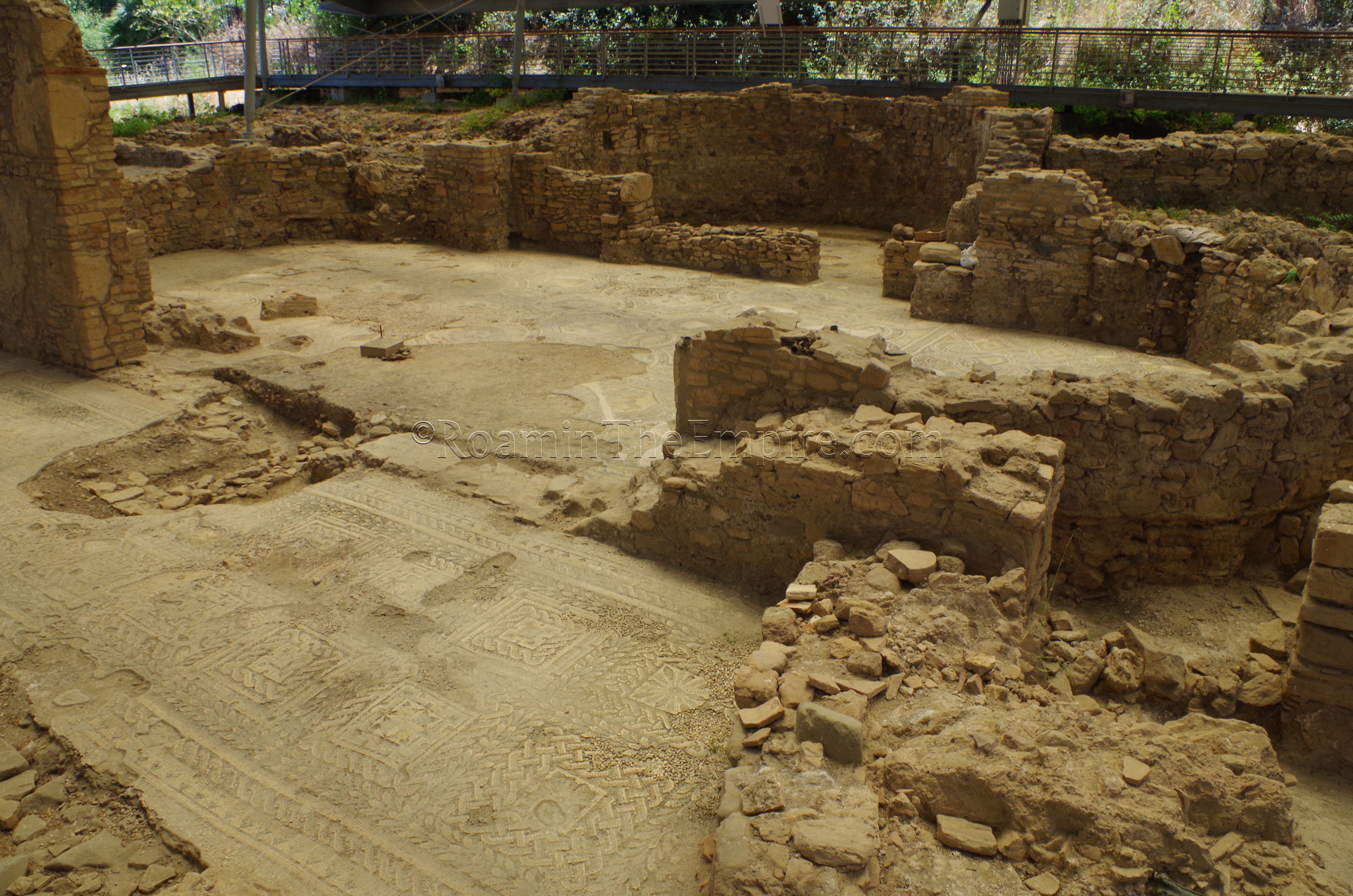
The primary focus of the course through the villa here is the peristyle and some adjacent rooms, including an apsed room and a large triple apsed room. The latter is interpreted as possibly being a triclinium, and it is this room which contains a figural mosaic, an image of a Bacchic scene along with images of animals and personifications of the seasons. Unfortunately, the walkways don’t run very close, to this area, and so perhaps one of the nicer mosaics on the site isn’t able to be seen exceptionally well.
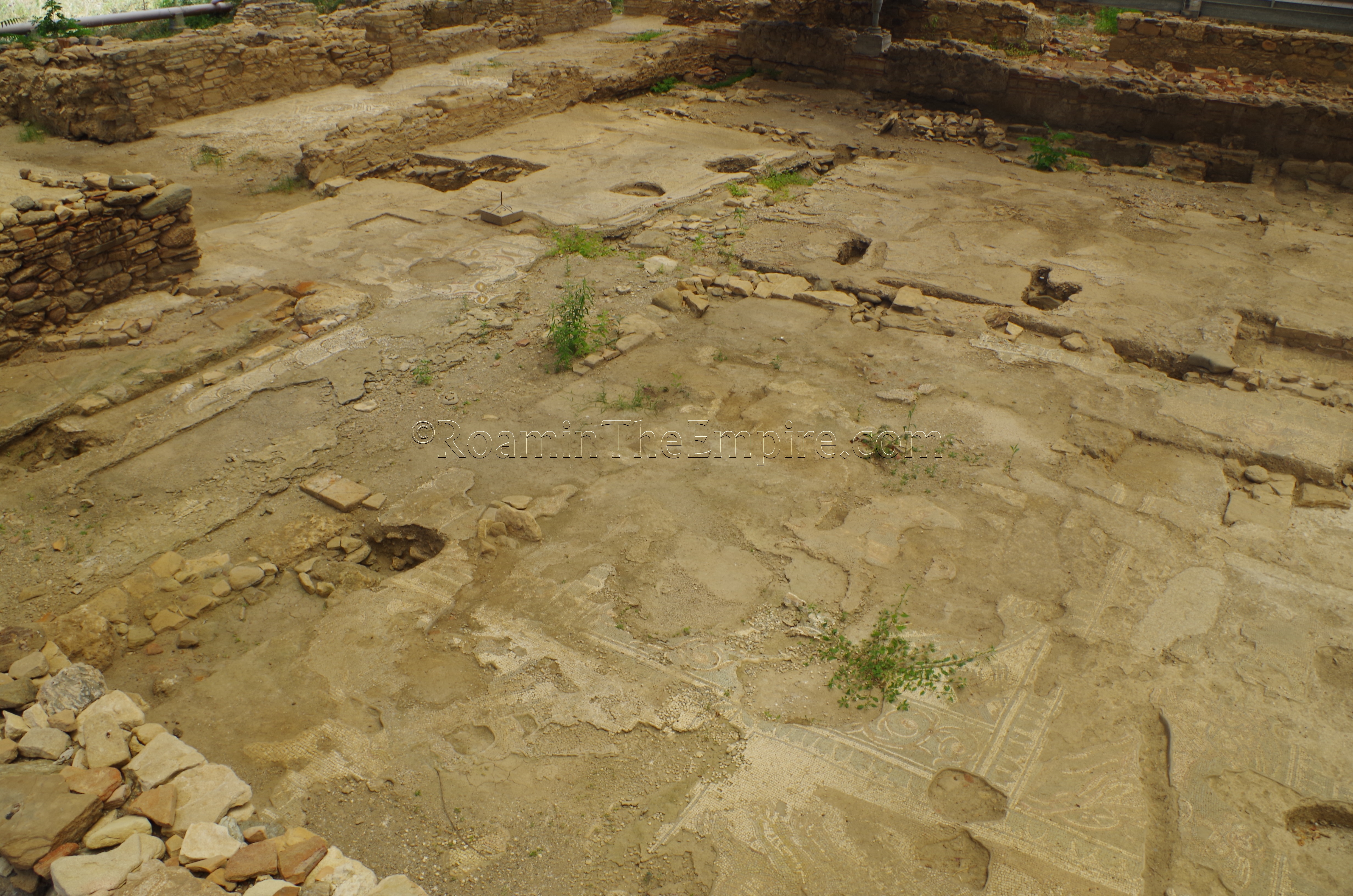
Within the open area of the peristyle, there have been excavations below the 4th century CE villa layer revealing remains from the earlier villa, and in the case of a few scant remains of walls, the 2nd to 1st century BCE structures. There are even some mosaics from the earlier villa that can be seen, though they are in a, predictably, very fragmentary state. One of the rooms uncovered within the perisyle of the late villa has been interpreted as the tablinum of the earlier villa.
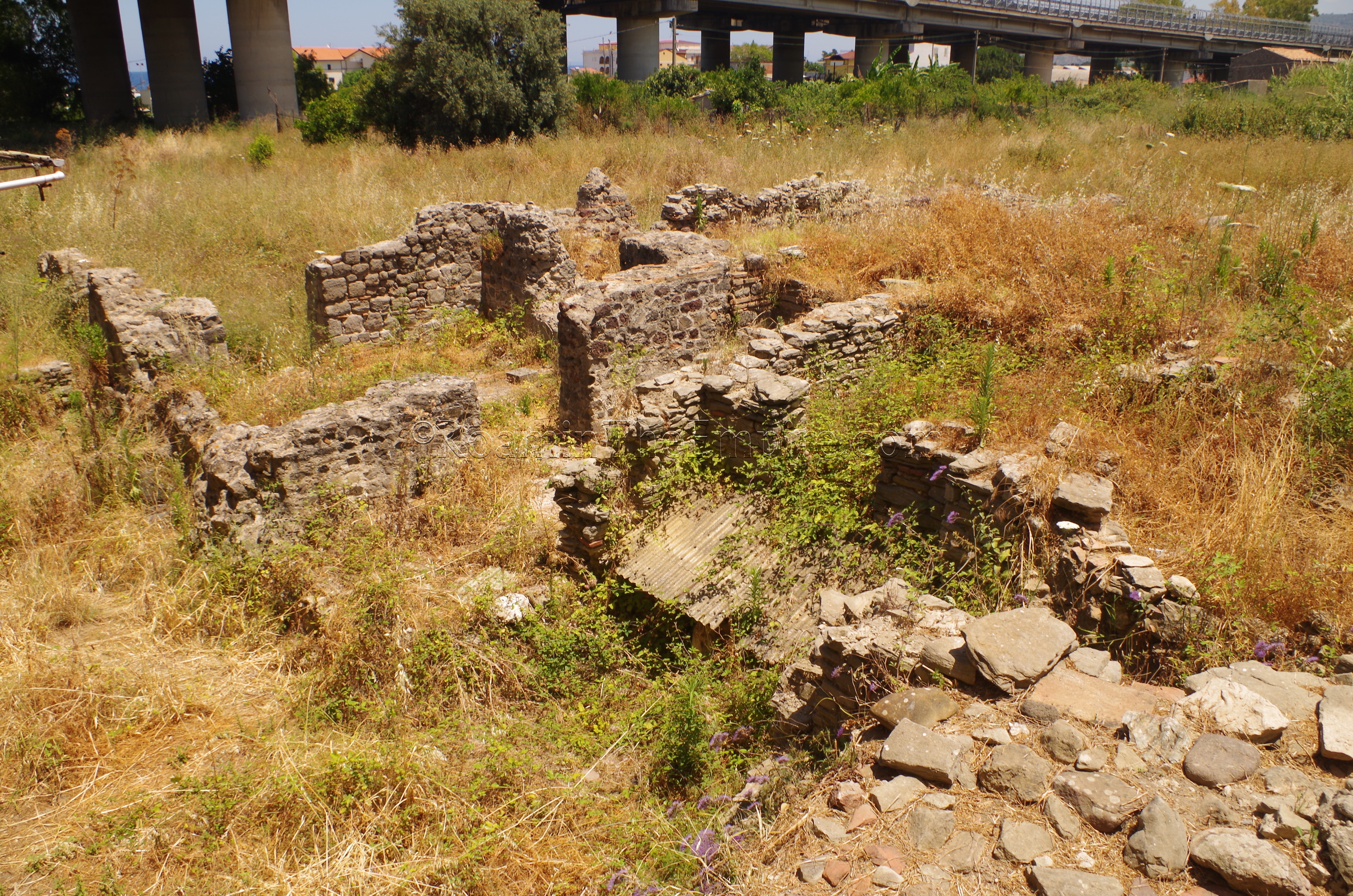
The northern area of the extent of the excavations belongs to a portico and some associated rooms, and while it is noted on the plans of the villa, it seems to be largely covered back over, and the walkway winds around the southern and eastern sides of the peristyle without ever really getting very close to this northern part. Interestingly, the bathing complex of the villa is skipped over and is largely left in a state of overgrowth, though the walls of the structures are still fairly visible. Given that many of the nicer mosaics on a site often come from the bathing complexes, it’s interesting that there doesn’t seem to have been any worth preserving or displaying here. Of course, perhaps there were and they were just covered back up to preserve them instead of covering them, but, that doesn’t seem extremely likely, as I imagine it would have been noted on the informational boards in the antiquarium.
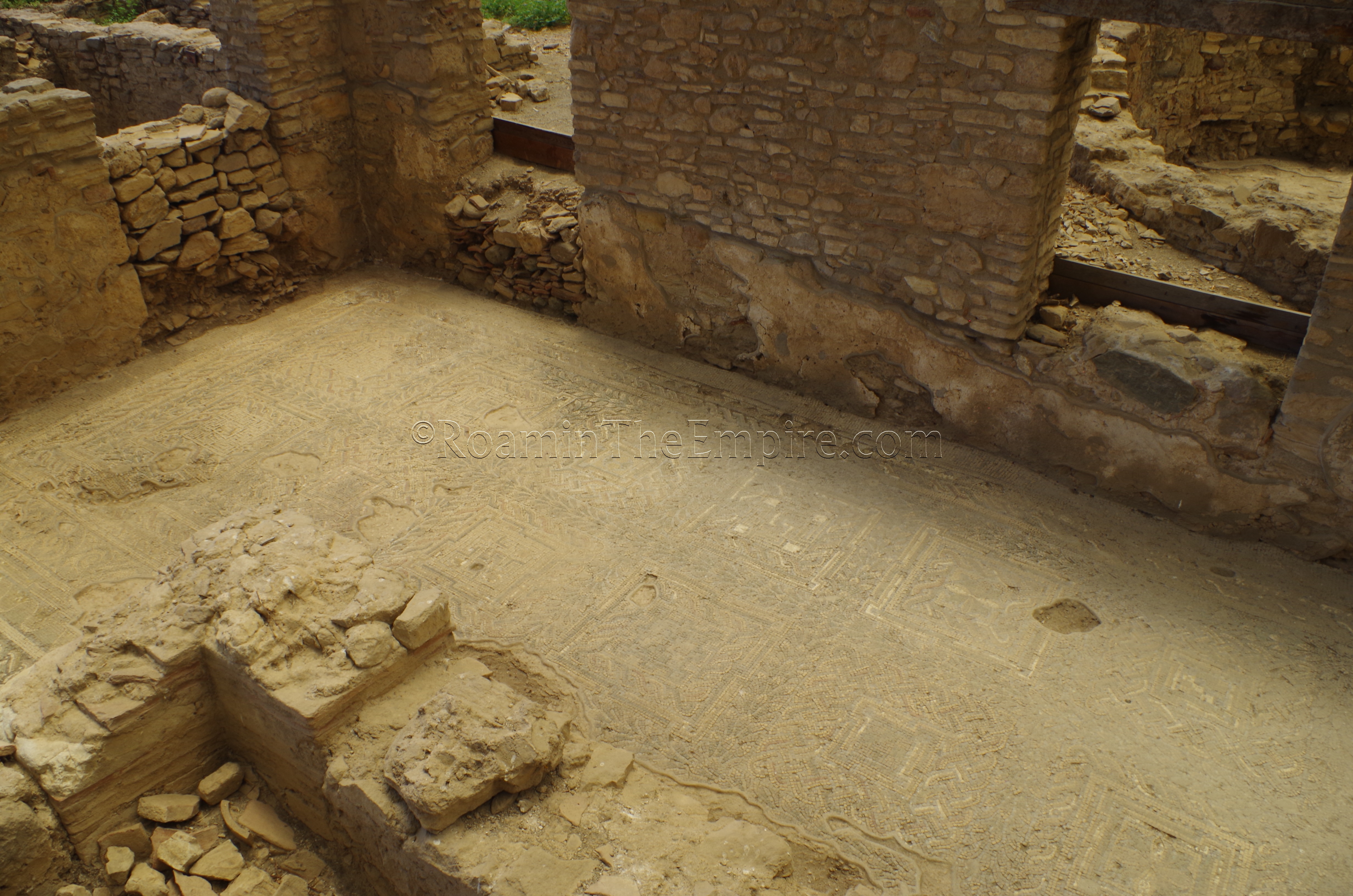
Overall, it’s a nice stop. As I’ve mentioned, it could use a bit more information through the course of the visit at the actual remains, rather than presenting everything in the antiquarium (part of why it is suggested that one visit the antiquarium first), but it’s not an exceptionally complex site, so, it can be overlooked to some degree. The level of conservation is pretty decent, the price is very reasonable, and the proximity to the train station is quite helpful. Tindari is also very much only a half a day site, so, returning to wherever through Patti makes stopping here a reasonable endeavor. All told, it can be seen very easily in a half an hour (maybe a little longer if one speaks Italian and can take more time to enjoy the literature in the antiquarium), so it can fit in nicely between the train schedule without causing too much disruption.
Sources:
On-site signs.


